ARTIST

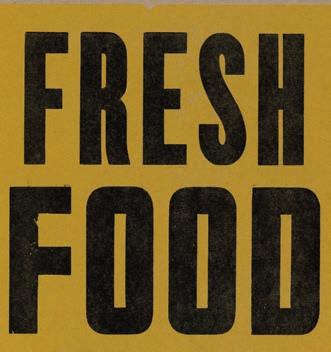
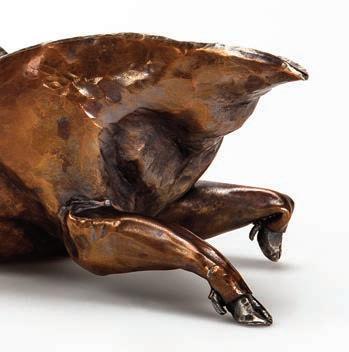


21
BIOGRAPHIES
Biographical information has been selectively compiled and is not meant to be exhaustive.
Wendy DesChene in collaboration with Jeff Schmuki as Plantbot Genetics, Inc.
Born: Sault Ste. Marie, Ontario, Canada, 1970
Lives: Auburn, AL
Education
M.F.A., Painting, Tyler School of Art, Temple University, Philadelphia, PA, 2003
Michael Austin Diaz
in collaboration with Holly Hanessian
Born: Ocean Springs, MS, 1983
Lives: Asheville, NC
Gavin Benjamin in collaboration with Jason Forck
Born: Georgetown, Guyana, South America, 1971
Lives: Pittsburgh, PA
Education
B.F.A., Photography, School of Visual Arts, New York, NY, 1993
Apprenticeship, with portrait photographer Arnold Newman, New York, NY, 1991
Selected Exhibitions
2021
Downtown Renown: Pittsburgh
Sports Greats, Pittsburgh Downtown Partnership, Senator John Heinz History Center, Pittsburgh, PA
Fresh and Contemporary: Moving Forward, group exhibition, The Houston Museum of African American Culture, Houston, TX
Heads of State, solo exhibition, Haw Contemporary/Heidmann Salon, Kansas City, MO
Making Home Here, group exhibition, The Mattress Factory, Pittsburgh, PA
Money, Labor, Capital, & Collage, group exhibition, Saint Kate—The Arts Hotel, Milwaukee, WI
More is More, group exhibition, Akron Art Museum, Columbus, OH
Piecing It All Together, group exhibition, Paradigm Gallery and Studios, Philadelphia, PA
Summer Series 1, group exhibition, Brandt-Roberts Galleries, Columbus, OH
2020
Darkest before Dawn: Art in a time of Uncertainty, group exhibition, Ethan Cohen KuBe (Kunsthalle Beacon), Beacon, NY
Wallpaper Diaries, group exhibition, Strohl Art Center and Fowler-Kellogg Art Center, Chautauqua Institution, Chautauqua, NY
2018
AD ART Show, group exhibition, MvVO Art, Sotheby's, New York, NY
gavinbenjamin.com
George Bowes
Born: Toledo, OH, 1961
Lives: Galveston, TX
Education
M.F.A., University of California, Davis, CA, 2001
B.F.A., Cleveland Institute of Art, Cleveland, OH, 1984
Selected Grants and Awards
1999 Individual Artist Fellowship, Ohio Arts Council, Columbus, OH
1995 Individual Artist Fellowship, Ohio Arts Council, Columbus, OH
1993 Regional Visual Arts Fellowship Award, Arts Midwest/NEA, Minneapolis, MN
1992 Individual Artist Fellowship, Ohio Arts Council, Columbus, OH
1990 Individual Artist Fellowship, Ohio Arts Council, Columbus, OH
Selected Collections
The Akron Art Museum, Akron, OH
Alfred Ceramic Art Museum at Alfred University, Alfred, NY
The Art Gallery of Nova Scotia, Halifax, Nova Scotia, Canada
Crocker Art Museum, Sacramento, CA
Minneapolis Institute of Art, Minneapolis, MN
The Newark Museum, Newark, NJ
Smithsonian American Art Museum, Renwick Gallery, Washington, DC
georgebowes.com
Certificate, Center for Electronic Art, San Francisco, CA, 2000
B.F.A., Studio Art, Concordia University, Montreal, Quebec, Canada, 1992
Selected Exhibitions
2020
Biophilia, solo exhibition, Eleanor D. Wilson Museum, Hollins University, Roanoke, VA
2018
PlantBot 2.0, solo exhibition, McMaster Gallery, School of Visual Art and Design, University of South Carolina, Columbia, SC
2016
PlantBot Genetics: The Moth Project, solo exhibition, Augustana Teaching Museum of Art, Augustana College, Rock Island, IL
2014
Artists Respond, solo exhibition, Oulu Museum of Art (Taidmuseo), Oulu, Finland
2012
Monsantra, solo exhibition, The New Gallery, Calgary, Alberta, Canada
Selected Grants and Awards
2015 NEA Artworks Grant, The Moth Project, St. Norbert College Department of Art, De Pere, WI
2014 St. Louis Program Grant, Marfa Dialogues, The Pulitzer Arts Foundation, St Louis, MO
Selected Publications
Brunner, Brigitta R., editor. Creating Citizens (pp. 117-28). University of Alabama, 2016.
Burr, Ty. “What’s Under the Domes? Hopes for a Future.” Boston Globe, 14 Oct. 2017.
Shields, Kathryn M., and Sunny Spillane. Creative Collaboration in Art Practice, Pedagogy, and Research (Chapter 1.2, pp. 33-346, cover image, and color plate 1.2). Cambridge Scholars Publishing, 2018.
Zimmerman, Patricia R. Thinking Through Digital Media: Transnational Environments and Locative Places Palgrave Macmillan, 2015. plantbotgenetics.com
Education
M.F.A., Interdisciplinary Art, Florida State University, Tallahassee, FL, 2015
B.A., Studio Art, College of Charleston, Charleston, SC, 2007
Selected Exhibitions
2021
Call & Response: Craft as a Tool for Activism, virtual exhibition, Museum of Craft and Design, San Francisco, CA
2019
Ferment, Whitney Fine Arts Center, Minneapolis College, Minneapolis, MN
2018
Craft as Social Practice, Socially Engaged Craft Collective, Museum of Fine Arts, Tallahassee, FL
2012
Neither Here Nor There, group exhibition, Fountain Art Fair, Art Basel, Miami Beach, FL
2009
Convergence, Harry Wood Gallery, Arizona State University, Tempe, AZ
2007
Young Contemporaries, Halsey Institute for Contemporary Art, Charleston, SC
Selected Presentations and Publications
Chametzky, Peter. “Telling Their Stories: ‘ArtFields.’” New Art Examiner, vol. Spring Quarterly, 2021.
Diaz, Michael Austin. Lecture. Art and Education for Social Justice Symposium, 2020, Lamar Dodd School of Art, Athens, GA.
Diaz, Michael Austin. Panel Participant. Installation Art: Fine Arts, Digital Media, or Social Issues Art?, Southeastern College Art Conference (SECAC), 2014, Sarasota, FL
Diaz, Michael Austin. Lecture. Making Now: Open for Exchange Symposium, Museum of Fine Arts, Florida State University, Tallahassee, FL
Ludwig, Justine. “New Businesses: Art in Search of Alternative Economic Systems.” The Miami Rail, vol. Spring Quarterly, 2016. michaelaustindiaz.com
22
Jason Forck
in collaboration with Gavin Benjamin
Born: Kansas City, KS, 1981
Lives: Pittsburgh, PA
Education
B.F.A., Glass, Painting, Emporia State University, Emporia, KS, 2005
Selected Exhibitions
2019
Dissolution III (with Seth Clark), Momentum Gallery, Asheville, NC
2018
Miles From Anywhere, solo exhibition, Boxheart Gallery, Pittsburgh, PA
2017
Dissolution (with Seth Clark), special exhibition, Sculptural Objects
Functional Art Exposition (SOFA), Chicago, IL
Making the Ordinary Extraordinary, Erie Art Museum, Erie, PA
2015
Gatherings: Contemporary Drawings, Fowler-Kellogg Art Center, Chautauqua Institution, Chautauqua, NY
2014
American Landscapes, Fowler-Kellogg Art Center, Chautauqua Institution, Chautauqua, NY
Pittsburgh Biennial, Pittsburgh Glass Center, Pittsburgh, PA
2013
Glass in the Gardens, Phipps Conservatory, Pittsburgh, PA
2012
50 Years of Studio Glass, Kentucky Museum of Art and Craft, Louisville, KY
Fifty by Fifty: Celebrating the 50th Anniversary of Studio Glass, Muskegon Museum of Art, Muskegon, MI jasonforck.com
Joan Iversen Goswell
Born: Pittsburgh, PA, 1939
Lives: Valencia, PA
Education
Classical Design Bookbinding with Jean Gunner, Hunt Botanical Library, Carnegie Mellon University, Pittsburgh, PA
Calligraphy with Elizabeth Houston, Pittsburgh Center for the Arts, Pittsburgh, PA
Printmaking and Design, Chatham University, Pittsburgh, PA
Selected Exhibitions
2020
The New Collective, The Senator John Heinz History Center, Pittsburgh, PA
2017
Distinguished, Respected, Renowned, Celebrated, Gallerie Chiz, Pittsburgh, PA
Power of the Press, Jaffe Center for Book Arts, Florida Atlantic University, Boca Raton, FL
2015
Mindful: Exploring Mental Health Through Art, Contemporary Craft, Pittsburgh, PA (traveling)
Reader’s Art: Concealed, Confined and Collected, Minnesota Center for Book Arts, Minneapolis, MN
2013
Politics and Other Diversions, Durango Art Center, Durango, CO
1999
Book Objects, Artists Books, The Berchtold Villa, Salzburg, Austria
1996
Codes and Messages, British Crafts Centre, London, England
Selected Collections
The Jack Ginsberg Collection, Johannesburg, South Africa
The Sackner Archive for Concrete and Visual Poetry, University of Iowa, Special Collections, Iowa City, IA
The University of California Los Angeles, Fine Art Library, Los Angeles, CA
The Yves Klein Archive, Paris, France
Selected Publication
Calderhead, Christopher. “Art & Protest.” Letter Arts Review, vol. 25, no. 1, 2011.
Holly Hanessian in collaboration with Michael Austin Diaz
Born: Rochester, NY, 1958
Lives: Tallahassee, FL
Education
M.F.A., Ceramics, University of Georgia, Athens, GA, 1998
B.A., Ceramics, University of Florida, Gainesville, FL, 1980
Selected Exhibitions
2021
Call & Response: Craft as a Tool for Activism, virtual exhibition, Museum of Craft and Design, San Francisco, CA
2018
Cont[ract] Earth, 1st Central China Biennale,Henan Museum, Zhengzhou, China
Craft as Social Practice, Socially Engaged Craft Collective, Museum of Fine Art, Tallahassee, FL
2016
Touch in Real Time, solo exhibition, Ohr-O’Keefe Museum of Art, Biloxi, MS
2009
Hard Copy: Book as Sculpture, National Museum of Women in the Arts, Washington, DC
Installation: Four Artists, Four Perspectives, Bentley Projects, Phoenix, AZ
Jingdezhen International Ceramics Fair, Jingdezhen, Jiangxi Province, China
2008
Poetry of Space, solo exhibition, Southwest School of Art, San Antonio, TX
Selected Grants and Awards
2011 Creative Residency Program, NEA Award, The Hambidge Center for the Arts, Rabun Gap, GA
2011 Florida Artists’ Book Prize, Bienes Museum of the Modern Book, Fort Lauderdale, FL
2011 Visual Arts Fellowship, Division of Cultural Affairs, Florida Department of State, Tallahassee, FL
Selected Presentations and Publications
Chametzky, Peter. “Telling Their Stories: ‘ArtFields.’” New Art Examiner, vol. Spring Quarterly, 2021.
Hanessian, Holly. Presentation. Open Engagement, Queens Museum, New York, NY, 2018.
hollyhanessian.com
Stefanie Herr
Born: Frankfurt am Main, Germany, 1974
Lives: Barcelona, Spain
Education
M.Sc., Architecture, Technische Universität Berlin, Germany, 2001
Selected Exhibitions
2020
International Paper Triennial, Musée Charmey, Val-de-Charmey, Switzerland
2019
Arquitectura y Arte, Fundación Caja Mediterráneo, Alicante, Spain
Ism, OSTRALE Biennale, Historische Tabakfabrik f6 Striesen, Dresden, Germany
Les Chefs d’Oeufre, solo exhibition, Festival de Fotografia Emergente (BFOTO), El Moliné, Barbastro, Spain
2017
As Slow As Possible, Embarrat Festival de Creació Contemporània, Fàbrica Trepat, Tàrrega, Spain
The Best Design of the Year, Museu del Disseny, Barcelona, Spain
2016
Emboscada, solo exhibition, La Plataforma, Barcelona, Spain
2015
Premi d’Escultura Fundació Vila Casas, Museu Can Mario, Palafrugell, Spain
2014
En Plein Air, solo exhibition, Santa Teresa Espai d’Art, Barcelona, Spain
2009
Pandora’s Boxes, BAC! Festival Internacional de Arte Contemporáneo, CCCB, Barcelona, Spain
Selected Residencies
2014 Artist-in-Residence, Islington Mill, Manchester, United Kingdom
2012 Artist-in-Residence, La Escocesa Centre de Creació, Barcelona, Spain stefanieherr.com
23
Amos Paul Kennedy, Jr.
Born: Lafayette, LA, 1948
Lives: Detroit, MI
Education
M.F.A., Graphic Design, University of Wisconsin-Madison, Madison, WI, 1997
B.A., Mathematics, Grambling State University, Grambling, LA, 1972
Selected Exhibitions
2020
The Letterpress Posters of Amos Paul Kennedy, Jr.,Poster House, New York, NY
2019
Art in Action: In Her Own Words, Library of Congress, Washington, DC
Rosa Parks: In Her Own Words, Library of Congress, Washington, DC
2018
Passin’ On To Others, Royall Forum, Beverly Reynolds Gallery 1 (multi-site project), Richmond, VA
2017
Quotations of Rosa Louise Parks and Church Fans, MoMA, New York, NY
Selected Grants and Awards
2017 Printer-in-Residence, Minnesota Center for Book Arts, Minneapolis, MN
2015 Glasgow Fellow, United States Artists, Chicago, IL
1985 Artist-in-Residence, The Coleman Center for Arts and Culture, York, AL
Selected Collections
Amos Paul Kennedy, Jr. Collection, Rare Book & Manuscript Library, University of Illinois at UrbanaChampagne, Urbana-Champagne, IL kennedyprints.com
Patty Kennedy-Zafred
Born: Springfield, OH, 1952
Lives: Murrysville, PA
Education
B.A., Journalism & Communications, Point Park University, Pittsburgh, PA, 1984
Selected Exhibitions
2021
Intersect Chicago: The Future of SOFA, Studio Art Quilt Associates (SAQA) Special Exhibition, Chicago, IL
Primal Forces: Earth, National Quilt Museum, Paducah, KY (traveling)
Women’s Votes, Women’s Voices, Women’s Rights, William J. Clinton Presidential Library and Museum, Little Rock, AR
2020
Art of the State: Pennsylvania The State Museum of Pennsylvania, Harrisburg, PA
Art Quilt Elements, Wayne Art Center, Wayne, PA
Deeds Not Words: The Power of Persistence, National Quilt Museum, Paducah, KY (traveling)
The Implications of the Camera Southern Alleghenies Museum of Art, Altoona, PA
2019
CraftForms, juried exhibition, Wayne Art Center, Wayne, PA
Fiberart International, Fiberarts Guild of Pittsburgh, Contemporary Craft, Pittsburgh, PA
Interpretations: Rhapsody, Visions
Art Museum, San Diego, CA
2018
Quilts=Art=Quilts, juried exhibition, Schweinfurth Memorial Art Center, Auburn, NY
2017
Form, Not Function: Quilt Art at the Carnegie, Carnegie Center for Art & History, New Albany, IN
Shifting Landscapes, form & concept, Santa Fe, NM
Selected Grants and Awards
2019 Honoree, Master Visual Artists VII, Senator John Heinz History Center, Pittsburgh, PA
2019 Scholarship Award, Ohio Designer Craftsmen, Best of 2019, Ohio Craft Museum, Columbus, OH (traveling)
2018 Master Award for Innovative Artistry, Quilts: A World of Beauty, International Quilt Festival, Houston, TX
2018 Paul J. Smith Prize for Excellence in Fiber, Excellence in Fibers, San Jose Museum of Textiles, San Jose, CA
2013 The Heartland Award, Quilt National ’13, Dairy Barn Cultural Arts Center, Athens, OH
Selected Collections
International Quilt Museum, Lincoln, NE
San Jose Museum of Quilts & Textiles, San Jose, CA
Senator John Heinz History Center, Pittsburgh, PA
The State Museum of Pennsylvania, Harrisburg, PA
The Textile Museum, Washington, DC pattykz.com
Anna Metcalfe
Born: Apple Valley, VA, 1978
Lives: Minneapolis, MN
Education
M.F.A., University of Minnesota, Minneapolis, MN, 2009
Post Baccalaureate, Nova Scotia College of Art and Design, Halifax, Nova Scotia, Canada, 2003
B.A., English, College of William and Mary, Williamsburg, VA, 2001
Selected Exhibitions
2020
Flow: Journey Through the Mississippi River Watershed, group exhibition, Dubuque Museum of Art, Dubuque, IA
2019
Upstream, group exhibition, Minnesota Marine Art Museum, Winona, MN
Selected Grants and Awards
2020 McKnight Research and Development Grant, Forecast Public Art, St. Paul, MN
2018 Open Studio Fellowship, Franconia Sculpture Park, Franconia, MN
2017 Artist Initiative Grant, Minnesota State Arts Board, St. Paul, MN
2017 Art Residency and Fellowship, Camargo Foundation/Jerome Foundation/St. John’s Pottery
Environmental, Cassis, France
2015 Artist Initiative Grant, Minnesota State Arts Board, St. Paul, MN
2013 Travel Grant, Jerome Foundation, St. Paul, MN
2013 Artist Initiative Grant, Minnesota State Arts Board, MN
Selected Collections
Flint Institute of Art, Flint, MI
Minnesota Marine Art Museum, Winona, MN
Summer Arts Discovery, Permanent Public Art Installation, The Landmark Center of Minnesota, St. Paul, MN
annametcalfe.com
24
BIOGRAPHIES (continued)
Xena Ni
in collaboration with Mollie Ruskin
Born: Hangzhou, China, 1988
Lives: Washington, DC
Education
M.F.A., Interaction Design, School of Visual Arts, New York, NY, 2014
B.S., Engineering (Product Design), Stanford University, Stanford, CA, 2010
Selected Exhibitions
2021 DC 2121, Rhizome, Washington, DC
We Are Home, HOMME Gallery, Washington, DC
2020
Art and Activism, The Cheshire, Washington, DC
2019
The Lottery, solo exhibition and residency, Hole in the Sky, Washington, DC
NaN—Not a Number, Data x Design group exhibition, Newlab, Brooklyn, NY
Transaction Denied, solo exhibition, Bread for the City, Washington, DC
Umbrella, group exhibition, Pakke Gallery, Washington, DC
2018
Group Exhibition, Dwell, Washington, DC
Visionary Responders, Artist-in-residence, The Sanctuaries, Washington, DC
Selected Grants and Awards
2019, DeCapital Grant, Washington, DC
Selected Publications
Capps, Kriston. “When Tech Makes Food Insecurity Worse.” Bloomberg CityLab, digital ed., 17 Apr. 2019.
Ni, Xena. “Transaction Denied.” Georgetown Law’s Color of Surveillance Conference, 7 Nov. 2019, Washington, DC. Conference session.
Wofford, Benjamin. “This DC Artist’s New Show Takes on a ‘Racially Motivated Wealth Test for Immigrants.’”
The Washingtonian [Washington, DC], digital ed., 8 Nov. 2019
madebyxena.com
Mollie Ruskin in collaboration with Xena Ni
Born: Baltimore, MD 1986
Lives: Brooklyn, NY
Education
B.A., Media Studies, Pomona College, Claremont, CA, 2008
Selected Exhibitions
2020
Light Me Up, solo exhibition, Liebre Gallery, Brooklyn, NY
2019
NaN—Not a Number, Data x Design group exhibition, Newlab, Brooklyn NY
Transaction Denied, solo exhibition, Bread for the City, Washington, DC
Umbrella, group exhibition, Pakke Gallery, Washington, DC
Selected Grants and Awards
2019, DeCapital Grant, Washington, DC
Selected Publications
Capps, Kriston. “When Tech Makes Food Insecurity Worse.” Bloomberg CityLab, digital ed., 17 Apr. 2019.
ru-design.org/art
Jeff Schmuki
in collaboration with Wendy DesChene as Plantbot Genetics, Inc.
Born: Phoenix, AZ, 1969
Lives: Statesboro, GA
Education
M.F.A., Ceramics, New York State College of Ceramics at Alfred University, Alfred, NY, 1998
B.F.A, Studio Art, Northern Arizona University, Flagstaff, AZ, 1993
Selected Exhibitions
2020
Biophilia, solo exhibition, Eleanor D. Wilson Museum, Hollins University, Roanoke, VA
2018
PlantBot 2.0, solo exhibition, McMaster Gallery, School of Visual Art and Design, University of South Carolina, Columbia, SC
2016
PlantBot Genetics: The Moth Project solo exhibition, Augustana Teaching Museum of Art, Augustana College, Rock Island, IL
2014
Artists Respond, solo exhibition, Oulu Museum of Art (Taidmuseo), Oulu, Finland
2012
Monsantra, solo exhibition, The New Gallery, Calgary, Alberta, Canada
Selected Grants and Awards
2015 NEA Artworks Grant, The Moth Project, St. Norbert College Department of Art, De Pere, WI
2014 St. Louis Program Grant, Marfa Dialogues, The Pulitzer Arts Foundation, St Louis, MO
Selected Publications
Brunner, Brigitta R., editor. Creating Citizens (pp. 117-28). University of Alabama, 2016.
Burr, Ty. “What’s Under the Domes? Hopes for a Future.” Boston Globe, 14 Oct. 2017.
Shields, Kathryn M., and Sunny Spillane. Creative Collaboration in Art Practice, Pedagogy, and Research (Chapter 1.2, pp. 33-346, cover image, and color plate 1.2). Cambridge Scholars Publishing, 2018.
Zimmerman, Patricia R. Thinking Through Digital Media: Transnational Environments and Locative Places Palgrave Macmillan, 2015. plantbotgenetics.com
Logan Woodle
Born: Conway, SC, 1987
Lives: Conway, SC
Education
M.F.A., Visual Arts, Jewelry and Metalsmithing, Edinboro University of Pennsylvania, Edinboro, PA, 2012
B.F.A., Visual Arts, Sculpture, Jewelry and Metalsmithing, Winthrop University, Rock Hill, SC, 2009
Selected Exhibitions
2021
[Re] Constructing Home, The Reeves House at Elm Street Arts, Woodstock, GA
2020
Materials: Hard and Soft, Greater Denton Arts Council, Denton, TX
New Horizons: Landscapes 2020, 3 Square Art Gallery, Fort Collins, CO SouthWorks, juried exhibition, Oconee Cultural Arts Foundation, Watkinsville, GA
2019
40 Under 40: The Next Generation of American Metal Artists, The Metal Museum, Memphis, TN
Arm Candy—The Art of Wearable Food, The Arts and Crafts Cooperative, Inc. (ACCI), Berkley, CA
2018
Appetites and Objects, Baltimore Jewelry Center, Baltimore, MD
Celebrating American Craft: Southern Style, Sarratt Gallery, Vanderbilt University, Nashville, TN
Fixins: The Work of Amber Eckersly and Logan Woodle, Bertha Lee Strickland Cultural History Museum, Seneca, SC
2017
20/20 Exhibition, Marion Cage Gallery, New Orleans, LA
Going Solo: Logan Woodle, Foundry Arts Center, Saint Charles, MO
2016
Blessed Burdens, Franklin G. Burroughs-Simeon B. Chapin Art Museum, Myrtle Beach, SC loganwoodle.com
25

ADDITIONAL IMAGES
COVER: STEFANIE HERR
Alcampo—Butcher Bob’s Garden
2012 (detail)
Photographic relief sculpture, cardboard, paper
2" x 10" x 7"
Photo: Stefanie Herr
INSIDE FRONT COVER: PATTY KENNEDY-ZAFRED
Heart of the Home, 2019 (detail)
Hand-pulled silkscreened images, vintage feed sacks; image transfer text; machine pieced and quilted 68" x 57"
Photo: Larry Berman
PAGE 3:
ANNA METCALFE
Pop Up Pollinator Picnic, 2016– 2021 (detail)
Porcelain, glaze, transfer prints

Installation, dimensions vary; .5" x 6" x 7"(one plate)
Photo: Renee Yamada
PAGE 6: MICHAEL AUSTIN DIAZ/ HOLLY HANESSIAN
New Histories: The Gadsden
Farm Project,2019 (detail)
Digitally printed tablecloth, ceramic plates, photographs, seed bombs, alfalfa hay, audio loop 1" x 10" diameter (one plate)
Photo: Michael Austin Diaz
PAGE 8: LOGAN WOODLE
Clabber Ladle, 2016 Sterling silver 15" x4" x4"
Photo: Keith Alan Jacobs
PAGE 26: LOGAN WOODLE
The House Built on Chicken Legs, 2019 Sterling silver
14" x10" x8"
Photo: T.J. Roth
PAGE 27: GEORGE BOWES
Prep Bowl, 2019
Porcelain, underglaze, glazes
4" x5" x5"
Photo: George Bowes
BACK COVER: ANNA METCALFE
Pop-up Pollinator Picnic, 2016– 21 (detail)
Porcelain, glaze, transfer prints; flower drawings in collaboration with artist Laura Corcoran
Installation, dimensions vary; 3" x 3" x 3" (one cup)
Photo: Renee Yamada
Dimensions are in inches—height preceding width preceding depth.
27
Board of Directors
Lisa Krieg, Chair
Albert D. Donnenberg, Ph.D., Vice Chair
Alexander Neal, Secretary
Kimberly Griffith, Treasurer
Margaret McCormick Barron
Lisa Belloli
Melanie Claxton
Domenic Dozzi
Mark Flaherty
Gretchen Givens Generett, Ph.D.
Susan Golomb, Emeritus
Emma Wallis Jones
Susan Gromis Kaplan
Christine McCray-Bethea
Michele O’Leary
Clyde Wilson Pickett, Ed.D.
Patricia A. Sheahan, Ph.D.
Patty Silberstein
Hilary Tyson
Lorene Vinski
David Zeve
Rachel Saul Rearick, Executive Director
Crafting Our Future Donors ($10,000+)
Anonymous
Clark R. Nicklas
Eden Hall Foundation
The Heinz Endowments
The Commonwealth of Pennsylvania, Honorable Thomas Wolf, Governor
Allegheny County Executive
Rich Fitzgerald
Redevelopment Authority of Allegheny County
Mayor William Peduto, City of Pittsburgh
Urban Redevelopment Authority of Pittsburgh, Streetface Renovation Program
Cathy Raphael and Alexandra Raphael
Elsa Limbach
Hillman Foundation
Marianne Bokan-Blair and David Blair
The Fine Foundation
PJ Dick & Trumbull (Clifford R. Rowe, Jr.)
Windgate Foundation
Allegheny Regional Asset District
Opportunity Fund
The Mars Family Charitable Foundation
Bridgeway Capital, Inc.
The Jack Buncher Foundation
Beverlynn B. and Steven Elliott
Jan Myers-Newbury
Larry and Sandy Rosen
John R. Tomayko
Hilary Tyson Porter and Charles Porter
Alexander and Tillie Speyer Foundation
The Raphael Family Fund of The Pittsburgh Foundation
Edward F. Rockman and Mary Ellen Johnson
Mark F. Flaherty and Mary McKinney Flaherty
Anonymous
Beth Wainwright
Susan Golomb
Lorene and Denis Vinski
Maggie McDonald and Russ Schuh
Anonymous
Judy & Michael Cheteyan Educational & Charitable Foundation
The Anne L. and George H. Clapp
Charitable and Educational Trust
Lisa Krieg
Karen Krieger and David Montgomery
Janet L. McCall and Jeffrey G. Boyd
Juliet Lea Hillman Simonds Foundation
Susan Harris Smith and Philip E. Smith
The Burkholder Foundation
Julie Kant
Judy Kelly
Heart of Craft Circle Donors ($5,000+)
Marianne Bokan-Blair and David Blair
Michelle L. Browne
John A. and Martha S. Burkholder
Tracy and Nick Certo
Judy and Michael Cheteyan
Dawn and Chris Fleischner
Vera and Albert Donnenberg
Leland and Janice Faller Schermer
Mark F. Flaherty and Mary McKinney Flaherty
Lucine Folgueras
Susan Golomb
Michael and Kimberly Griffith
Carolyn and Paul Hrach
Julie Gibson Kant
Lisa Krieg
Karl F. Krieger
Elsa Limbach
Kate L. Lydon
Peter and Wendy Mars
Janet Lee McCall
Margaret McDonald and Russell Schuh
Heather A. McElwee and Chris T. Clarke
Marilyn Meltzer
Diane Mohr
Amy B. Morgan
Janice L. Myers-Newbury
Risë and Daniel Nagin
Clark R. Nicklas
Demetrios and Kathe Patrinos
Catherine Raphael
Edward F. Rockman* and Mary Ellen Johnson
Larry and Sandra Rosen
Patty and David J. Silberstein
Lorene and Denis Vinski
Beth Wainwright
David Zeve
Legacy Circle (Bequests)
Anne Bokan Charitable
Remainder Trust *
Donna Hollen-Bolmgren
Gerri Kay*
Elizabeth Rockwell Raphael
Clark R. Nicklas*
*deceased
We acknowledge with appreciation the following staff and volunteers for their contributions to Food Justice: Growing a Healthier Community Through Art
Rachel Saul Rearick, Executive Director
Kate Lydon, Director of Exhibitions & Programs
Yu-San Cheng, Director of Operations and Finance
Jim Ebbert, Retail Sales Manager
Kirsten Ervin, Volunteer
Kate Fitzgerald, Program Assistant
Lindsay Anne Herring, 2021 M.A. Food Studies Intern, Chatham University
Allison Jones, Education Manager
Liz Lenthe, Development Manager
Janet McCall, Emeritus Director
Rebecca McNeil, CFO—Art Finance Cohort
Aaron Martin, Director of Development
Pam Morrison, Volunteer
Marissa Murin, 2021 Cheteyan Scholar
Trish O’Connell, Director of Business Development
Karen Roberts, Volunteer
Tammy Schweinhagen, Volunteer
Zoe Trexel, Volunteer
Mandy Wilson, Director of Marketing
ISBN 978-0-9960989-4-6
28
AMOS PAUL KENNEDY, JR. A Message from the People 2021 Letterpress printed card 8" x6"
5645 Butler Street
Pittsburgh, Pennsylvania 15201
PHONE:412-261-7003
contemporarycraft.org

 DESIGN: PAULSCHIFINO, SCHIFINODESIGN COM
DESIGN: PAULSCHIFINO, SCHIFINODESIGN COM




 By Ken Regal
By Ken Regal
 By Karen Weeks
By Karen Weeks


 Photograph, exhibition canvas mounted on panel, lacquers, glass objects, mixed media Installation, dimensions vary
Photograph, exhibition canvas mounted on panel, lacquers, glass objects, mixed media Installation, dimensions vary





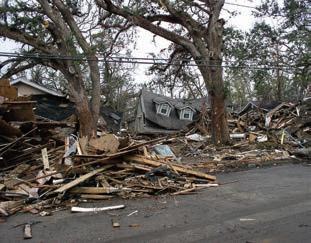




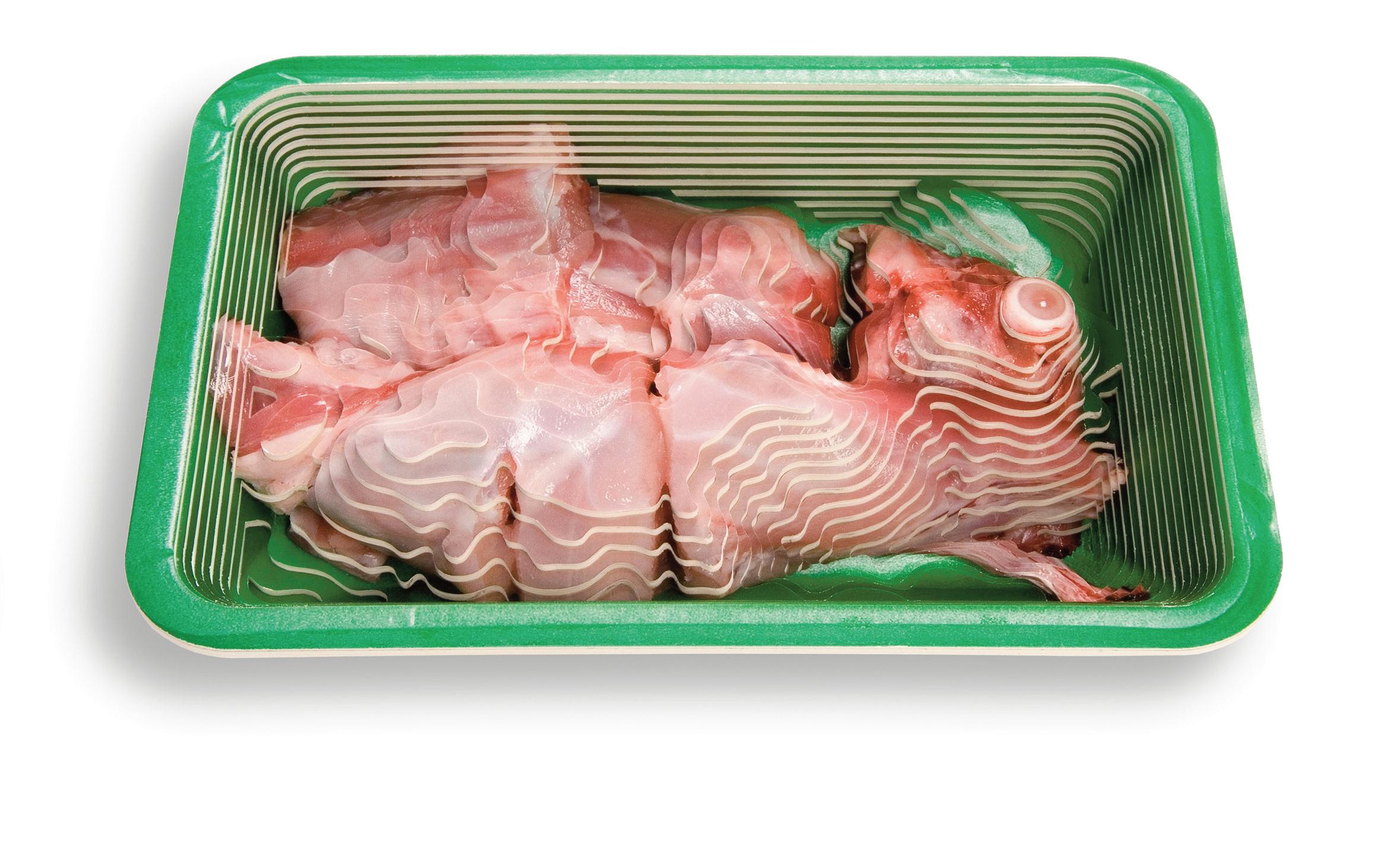

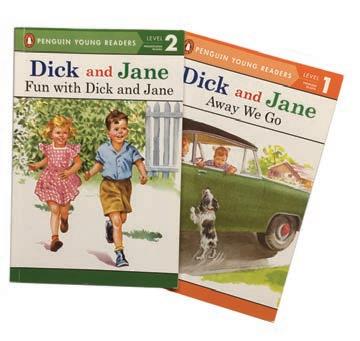



 Photo: Larry Berman
Kennedy-Zafred is one of the exhibiting artists featured at Contemporary Craft’s Satellite Gallery, BNY Mellon Center, downtown Pittsburgh.
Photo: Larry Berman
Kennedy-Zafred is one of the exhibiting artists featured at Contemporary Craft’s Satellite Gallery, BNY Mellon Center, downtown Pittsburgh.


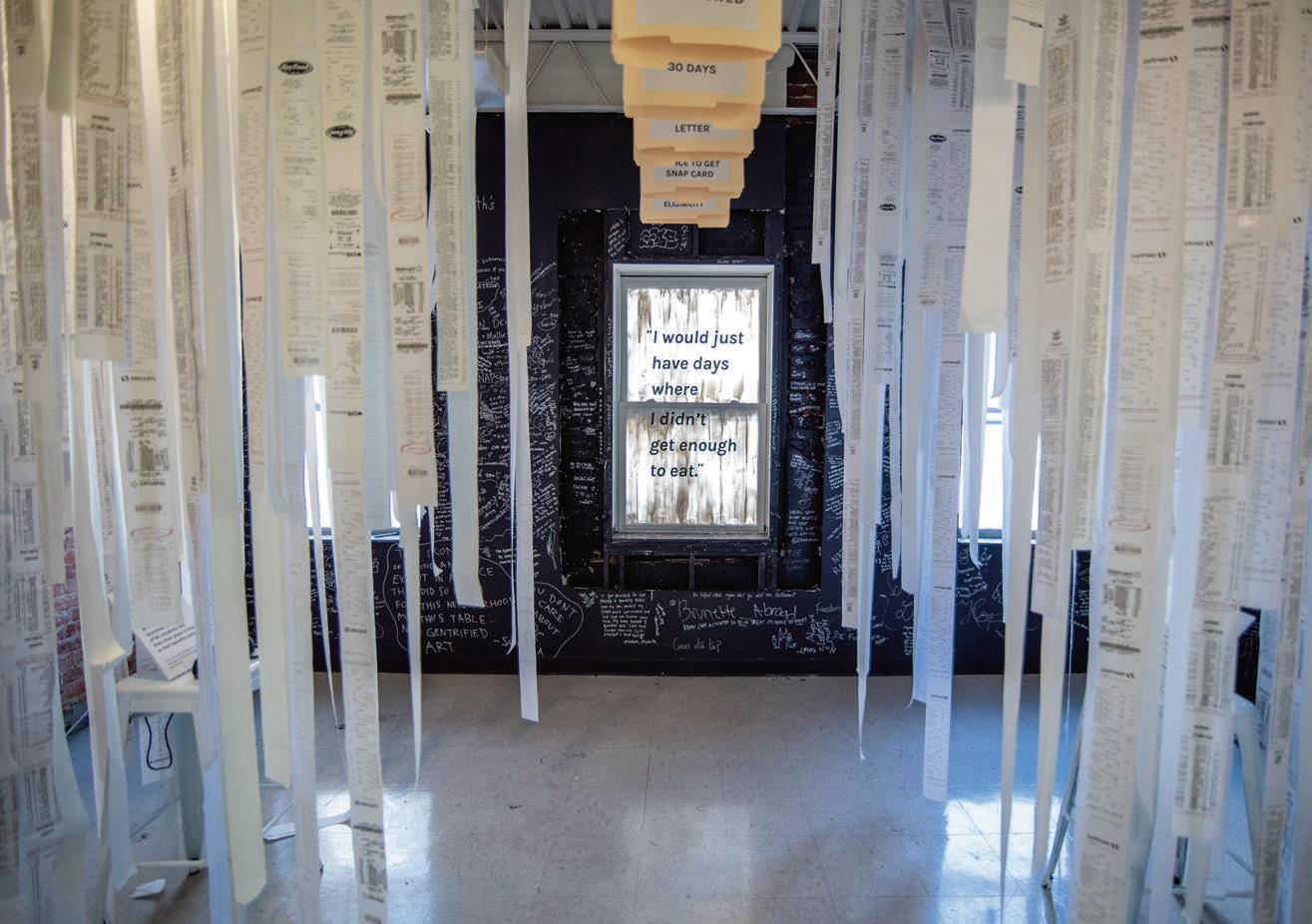

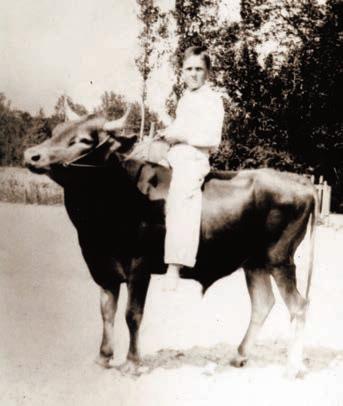






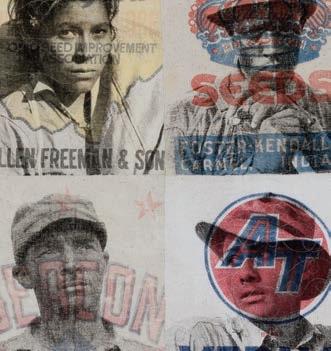








 DESIGN: PAULSCHIFINO, SCHIFINODESIGN COM
DESIGN: PAULSCHIFINO, SCHIFINODESIGN COM